Abstract
The changes in other plasma lipoproteins which accompany alterations in very low density lipoproteins (VLDL) were studied in 31 normal and hyperlipidemic men and women who underwent weight reduction, carbohydrate induction, or clofibrate treatment. Plasma lipids and individual lipoprotein cholesterol concentrations were measured serially during control and treatment periods. Low density lipoprotein (LDL) protein was determined by radial immunodiffusion. Oppositely directed changes in VLDL and LDL were found with each of the three metabolic perturbations. Changes in high density lipoprotein (HDL) cholesterol generally paralleled those in LDL but were less consistent. Two patients with type III hyperlipoproteinemia failed to demonstrate reciprocal increases in LDL despite more than 40% reduction in plasma glycerides or VLDL with weight reduction or clofibrate therapy. After clofibrate therapy, LDL increased in proportion to the absolute decrease in VLDL cholesterol during treatment. LDL protein changed relatively less than did LDL cholesterol. The mechanism for the interdependency of plasma VLDL and LDL concentrations over the long term is not known and may be the result of altered rates of interconversion of these lipoproteins, or to feedback inhibition by VLDL of LDL production and release.
Full text
PDF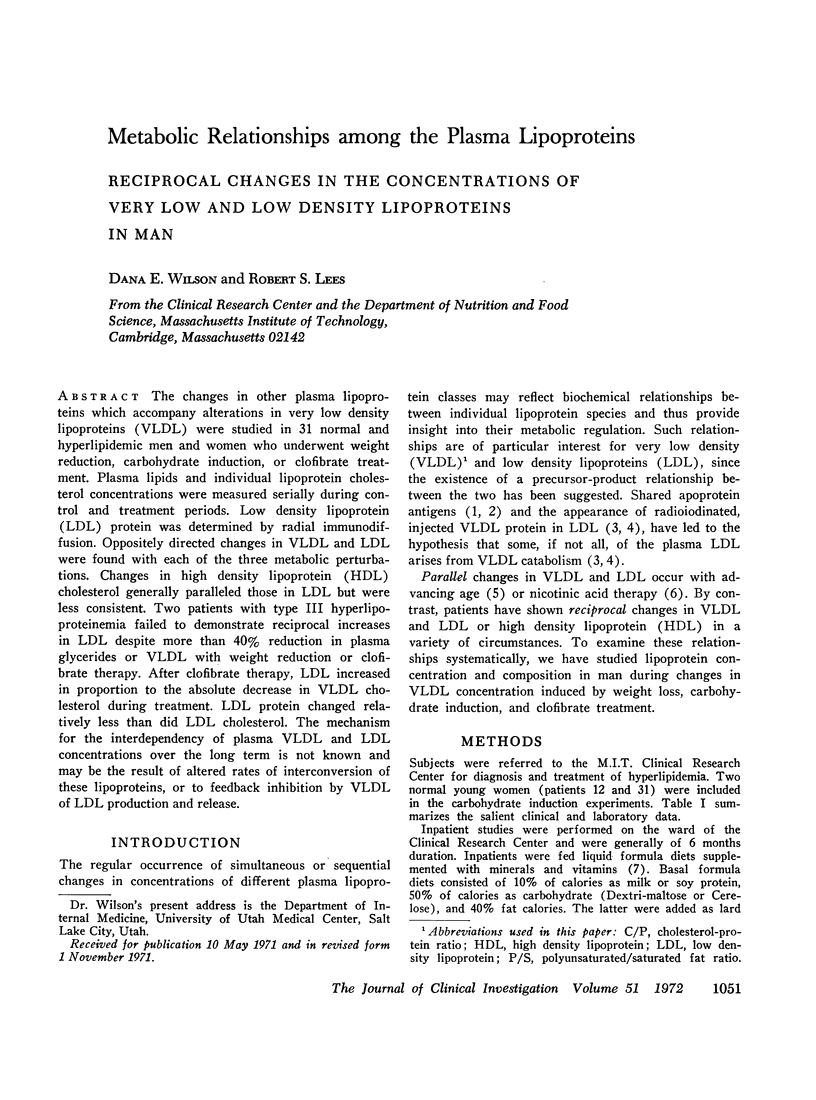
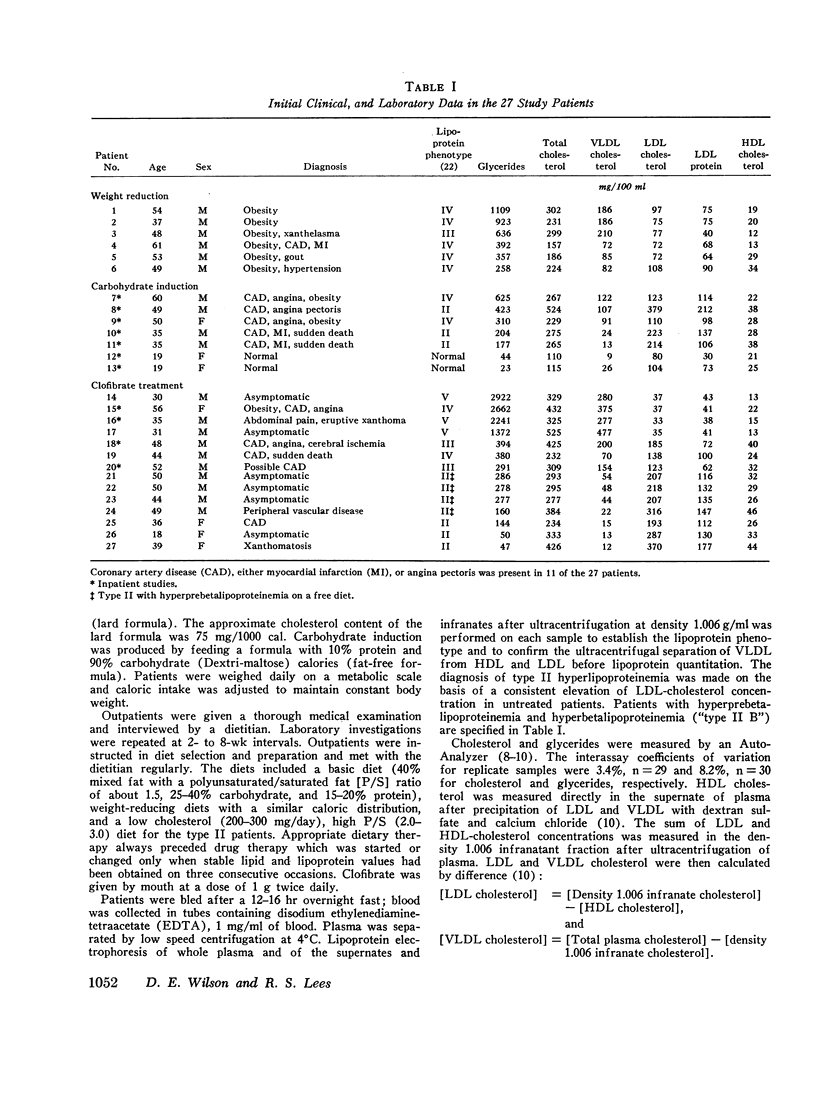
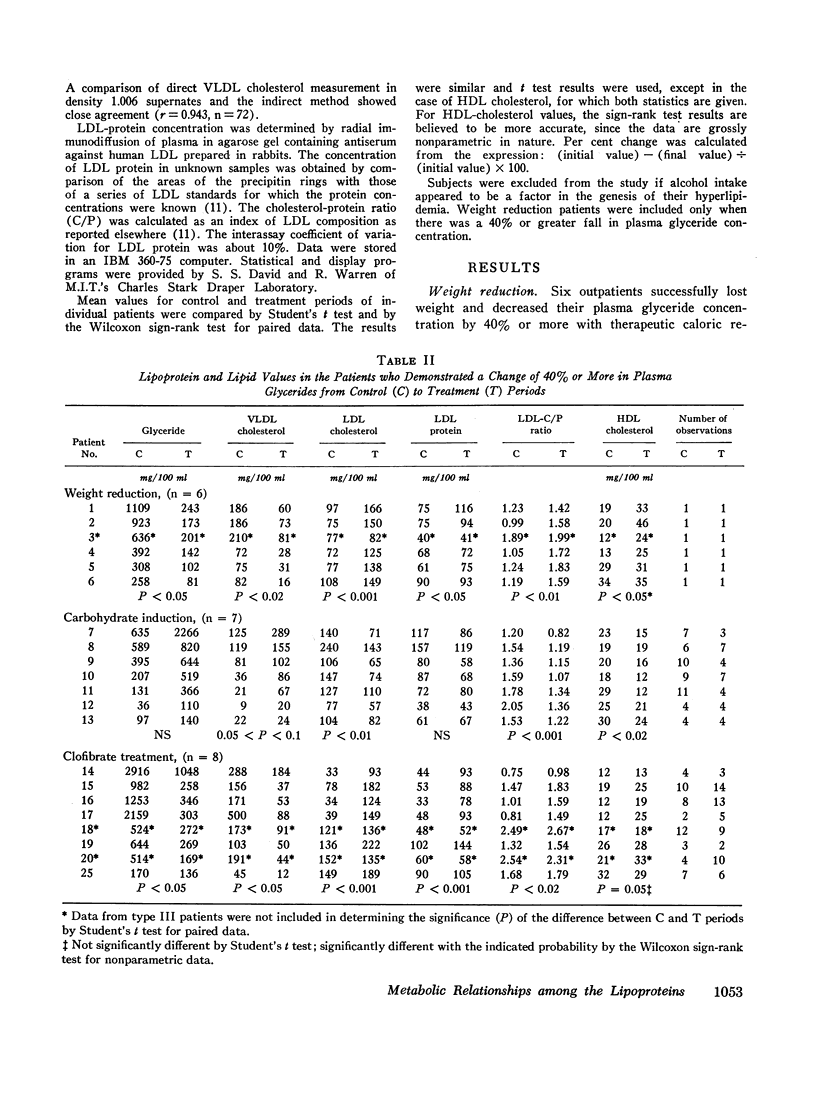

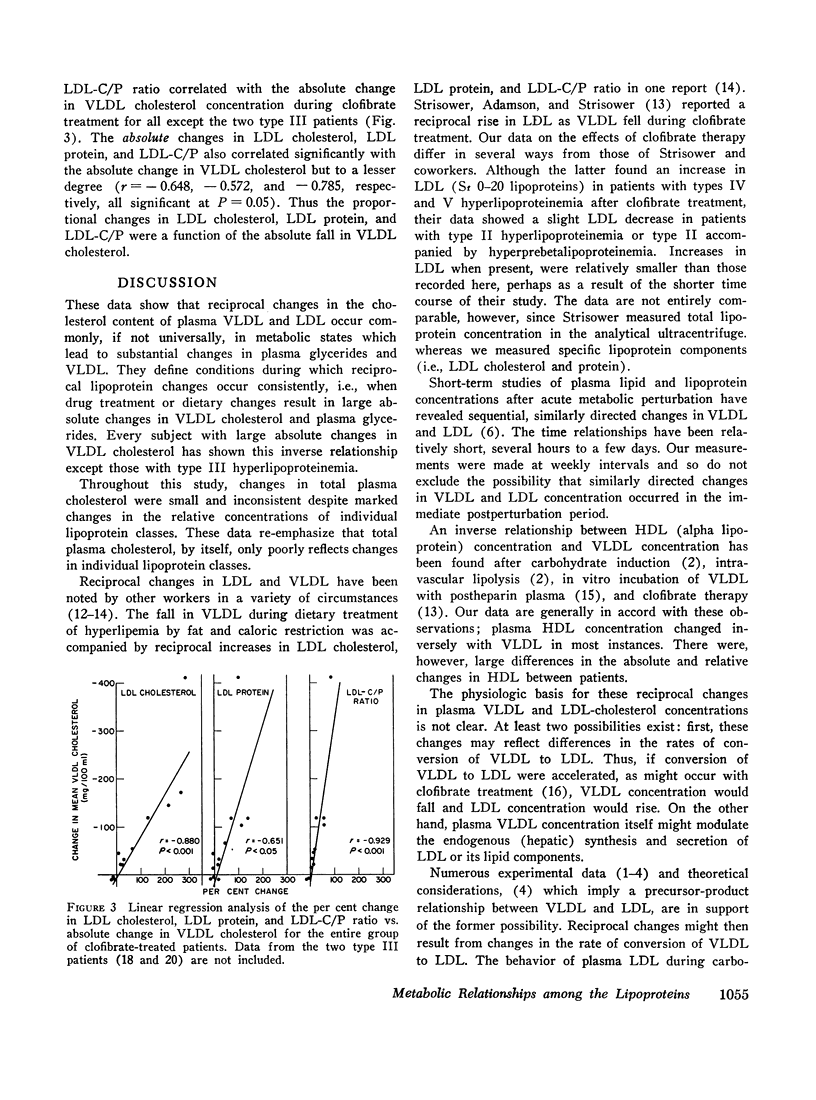
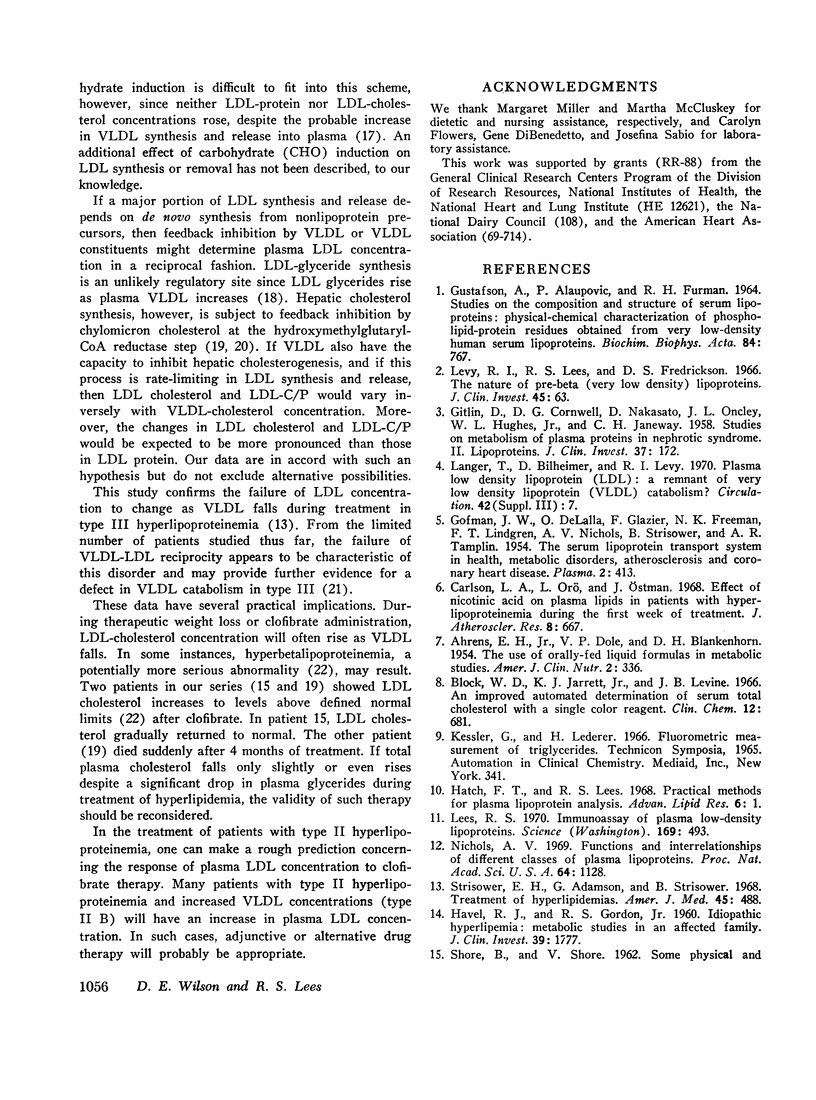
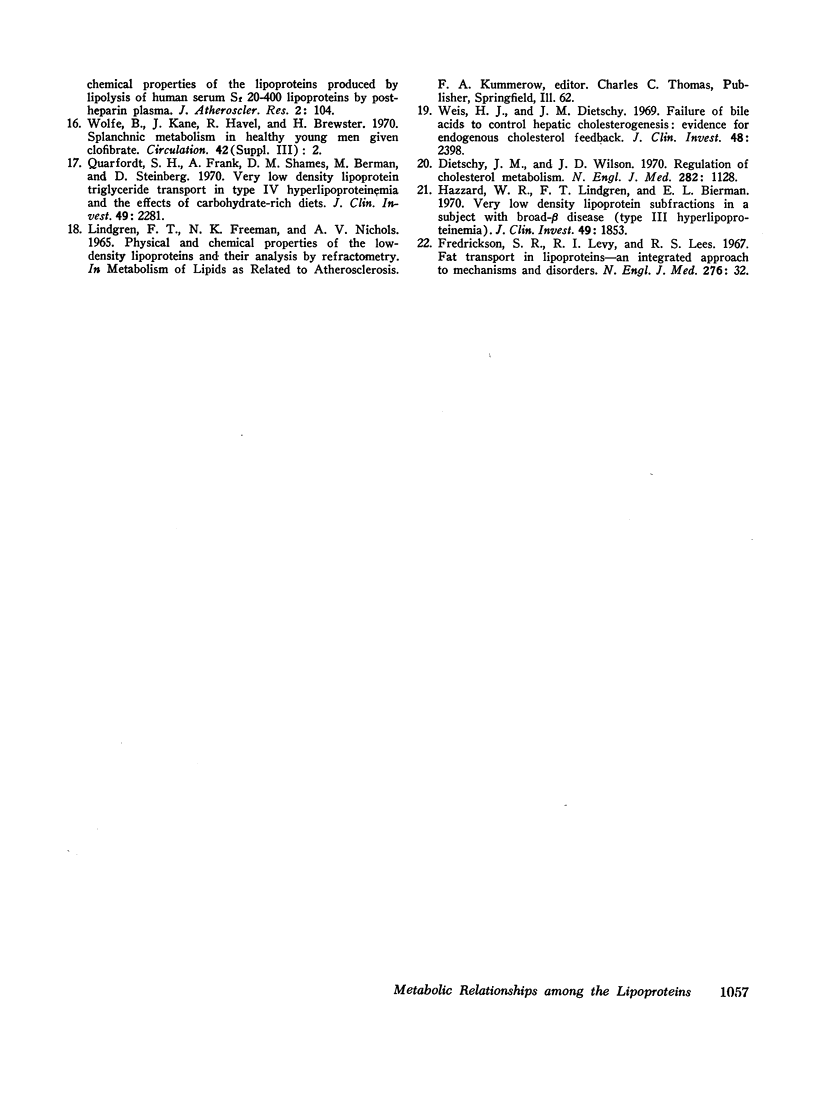
Selected References
These references are in PubMed. This may not be the complete list of references from this article.
- AHRENS E. H., Jr, DOLE V. P., BLANKENHORN D. H. The use of orally-fed liquid formulas in metabolic studies. Am J Clin Nutr. 1954 Sep-Oct;2(5):336–342. doi: 10.1093/ajcn/2.5.336. [DOI] [PubMed] [Google Scholar]
- Block W. D., Jarrett K. J., Jr, Levine J. B. An improved automated determination of serum total cholesterol with a single color reagent. Clin Chem. 1966 Oct;12(10):681–689. [PubMed] [Google Scholar]
- Carlson L. A., Orö L., Ostman J. Effect of nicotinic acid on plasma lipids in patients with hyperlipoproteinemia during the first week of treatment. J Atheroscler Res. 1968 Jul-Aug;8(4):667–677. doi: 10.1016/s0368-1319(68)80025-0. [DOI] [PubMed] [Google Scholar]
- Dietschy J. M., Wilson J. D. Regulation of cholesterol metabolism. I. N Engl J Med. 1970 May 14;282(20):1128–1138. doi: 10.1056/NEJM197005142822005. [DOI] [PubMed] [Google Scholar]
- GITLIN D., CORNWELL D. G., NAKASATO D., ONCLEY J. L., HUGHES W. L., Jr, JANEWAY C. A. Studies on the metabolism of plasma proteins in the nephrotic syndrome. II. The lipoproteins. J Clin Invest. 1958 Feb;37(2):172–184. doi: 10.1172/JCI103596. [DOI] [PMC free article] [PubMed] [Google Scholar]
- GUSTAFSON A., ALAUPOVIC P., FURMAN R. H. STUDIES OF THE COMPOSITION AND STRUCTURE OF SERUM LIPOPROTEINS: PHYSICAL-CHEMICAL CHARACTERIZATION OF PHOSPHOLIPID-PROTEIN RESIDUES OBTAINED FROM VERY-LOW-DENSITY HUMAN SERUM LIPOPROTEINS. Biochim Biophys Acta. 1964 Dec 2;84:767–769. doi: 10.1016/0926-6542(64)90040-x. [DOI] [PubMed] [Google Scholar]
- HAVEL R. J., GORDON R. S., Jr Idiopathic hyperlipemia: metabolic studies in an affected family. J Clin Invest. 1960 Dec;39:1777–1790. doi: 10.1172/JCI104202. [DOI] [PMC free article] [PubMed] [Google Scholar]
- Hatch F. T. Practical methods for plasma lipoprotein analysis. Adv Lipid Res. 1968;6:1–68. [PubMed] [Google Scholar]
- Hazzard W. R., Porte D., Jr, Bierman E. L. Abnormal lipid composition of chylomicrons in broad-beta disease (type 3hyperlipoproteinemia). J Clin Invest. 1970 Oct;49(10):1853–1858. doi: 10.1172/JCI106403. [DOI] [PMC free article] [PubMed] [Google Scholar]
- Lees R. S. Immunoassay of plasma low-density lipoproteins. Science. 1970 Jul 31;169(3944):493–495. doi: 10.1126/science.169.3944.493. [DOI] [PubMed] [Google Scholar]
- Levy R. I., Lees R. S., Fredrickson D. S. The nature of pre beta (very low density) lipoproteins. J Clin Invest. 1966 Jan;45(1):63–77. doi: 10.1172/JCI105324. [DOI] [PMC free article] [PubMed] [Google Scholar]
- Nichols A. V. Functions and interrelationships of different classes of plasma lipoproteins. Proc Natl Acad Sci U S A. 1969 Nov;64(3):1128–1137. doi: 10.1073/pnas.64.3.1128. [DOI] [PMC free article] [PubMed] [Google Scholar]
- Quarfordt S. H., Frank A., Shames D. M., Berman M., Steinberg D. Very low density lipoprotein triglyceride transport in type IV hyperlipoproteinemia and the effects of carbohydrate-rich diets. J Clin Invest. 1970 Dec;49(12):2281–2297. doi: 10.1172/JCI106448. [DOI] [PMC free article] [PubMed] [Google Scholar]
- SHORE B., SHORE V. Some physical and chemical properties of the lipoproteins produced by lipolysis of human serum Sf 20-400 lipoproteins by post-heparin plasma. J Atheroscler Res. 1962 Jan-Apr;2:104–114. doi: 10.1016/s0368-1319(62)80058-1. [DOI] [PubMed] [Google Scholar]
- Strisower E. H., Adamson G., Strisower B. Treatment of hyperlipidemias. Am J Med. 1968 Oct;45(4):488–501. doi: 10.1016/0002-9343(68)90165-4. [DOI] [PubMed] [Google Scholar]
- Weis H. J., Dietschy J. M. Failure of bile acids to control hepatic cholesterogenesis: evidence for endogenous cholesterol feedback. J Clin Invest. 1969 Dec;48(12):2398–2408. doi: 10.1172/JCI106206. [DOI] [PMC free article] [PubMed] [Google Scholar]


